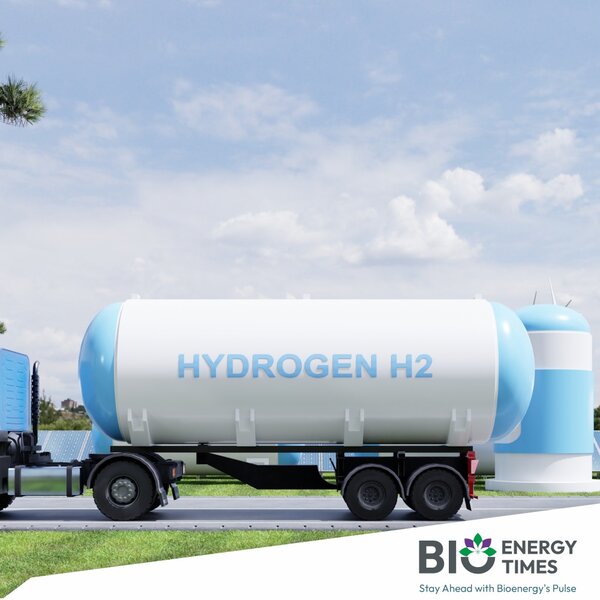India : The Green Hydrogen Opportunity

The Ministry of New and Renewable Energy issued guidelines for green hydrogen producers under Tranche II of the SIGHT scheme, targeting 450,000 TPA of green hydrogen, with 40,000 TPA reserved for biomass-based pathways. This initiative aligns with India’s goal of developing 5 million TPA of green hydrogen by 2030, supported by 125 GW of renewable energy, under the National Green Hydrogen Mission.
Last month, the Ministry of New and Renewable Energy issued guidelines to green hydrogen producers under Tranche II of Strategic Interventions for Green Hydrogen Transition or SIGHT scheme. The capacity of Tranche-II will be 450,000 tonne per annum of green hydrogen, with 40,000 TPA reserved for biomass-based pathways (bucket- II) and the rest for technology agnostic pathways (bucket-I). These norms are the latest in a series of measures announced by the government to attract bidders and build green hydrogen capacity after it unveiled the National Green Hydrogen Mission in January 2023 with an initial outlay of Rs. 19,744 crores up to FY30. With India aiming to lead the global clean energy transition, the Mission plans to develop green hydrogen capacity of at least 5 million tonne per annum by 2030 with an associated renewable energy capacity of about 125 GW to power its production. The latter should not be a challenge since India is targeting around 500 GW of non-fossil capacity by 2030.
While the capacity is expected to attract investments of Rs. 8 lakh crores and create over six lakh jobs, it is important to note that the production has the potential to cut down India’s annual fuel import bill by Rs. one lakh crore (~$12 billion) and abate 50 million metric tonne of greenhouse gas emissions. For context, India’s FY24 oil import bill was $132 billion while GHG emissions stood at four billion metric tons of carbon dioxide equivalent (GtCO₂e) per year. Thus, green hydrogen production will have a key role to play as India launches an all-out renewable offensive to bring down carbon emissions by one billion tonne towards the end of this decade, reduce the economy’s carbon intensity to less than 45% by 2030, and eventually achieve net zero emissions by 2070.
It doesn’t come as a surprise that companies from both public and private sectors are vying for a piece of action in the green hydrogen space. Indian companies including Reliance Industries, Indian Oil Corp. NTPC, Adani Enterprises, Greenko and JSW Energy have made announcements for setting up green hydrogen plants while others like Reliance Electrolyser Manufacturing, John Cockerill Green Hydrogen Solutions, Ohmium and Larsen & Toubro are creating capacity to manufacture electrolysers, which are crucial for splitting water by using renewable power to produce hydrogen. Further, government owned oil marketing companies have joined hands and are creating a roadmap to produce one million tonne of green hydrogen by 2030. Refineries in the country already utilize hydrogen for internal consumption, which has the potential to be converted into green hydrogen.
Why Green H2
Hydrogen is a versatile source of energy that can contribute to decarbonisation of global economy if produced using low carbon emitting sources. The fuel is thus expected to act as a critical enabler to achieve the global targets to limit the increase in temperature to 1.5-degree Celsius and bring down carbon intensities of hard to abate sectors such as transportation, industries like steel and cement, and residential applications. It is also essential to find an alternative fuel for applications where direct electrification is not feasible and that is where hydrogen emerges as a viable solution.
Thus, as many as 30 countries, including India, have announced National Hydrogen Mission as they aim to move towards green hydrogen as a future fuel and feedstock. The global hydrogen economy is expected to see investments of more than $10 trillion by 2050 with an estimated $70 billion of government support. Further, in order to boost adoption of hydrogen fuel cell based electric vehicles, 20 nations have announced a ban on sale of ICE vehicles before 2035.
The shift towards green hydrogen at scale is particularly critical for energy security of a country like India that imports 85% of its crude oil requirements. Given the rising geo-political tensions, Indian economy runs of the risk of stalling if the supply lines are disrupted. Thus, it is important to become self-reliant and ensure that the economy remains largely unaffected and de-linked from any such supply shocks in the future. Two, India is the third largest global CO2 emitter (~7% of global CO2 emission), though well below China and United States. However, given that India is the fastest growing economy in the world, these emissions will continue to rise and hurt the environment. A shift towards green hydrogen, along with other key sources of renewable energy, is crucial to mitigate any climate led disasters. Importantly, along with the high cost of imported fuel, India gives away overall energy subsidies of as much as $30 billion per year on oil and gas, coal, transmission and distribution of power, renewable energy and electric vehicles. A chunk of these subsidies can be diverted for the development of hydrogen ecosystem, grab the early opportunity to capture the entire value chain and aim for global exports.
Challenges
The first production of green hydrogen is expected only in 2026 but India needs to ensure that the green fuel is viable for large scale adoption and doesn’t suffer due to its high price. The cost of hydrogen produced from electrolysis has fallen by nearly 60% since 2010 but it still costs $2 to $2.5 per kilogram more than hydrogen produced using fossil fuels. Thus, there is a need to further increase efficiency of electrolyser & fuel cells technologies and ensure unhindered incentives beyond five years that would enable price parity with blue or grey hydrogen. Importantly, production of renewable energy is largely intermittent and not available round-the-clock while battery storage is not economical. While hybrid RE projects are now being built, it will take a few years before India has a well functional round the clock supply of renewable power.
Further, using green hydrogen to decarbonize domestic end-use industries remains uncertain due to challenges such as infrastructure limitations, regulatory ambiguities and the absence of clear mandates for its use. The green hydrogen units require both vast amounts of land and water. Both land and water are sensitive topics and the government needs to ensure that companies committed to production of green hydrogen do not face any hurdles or scarcity. The issue of water is particularly crucial, given that larges parts of India are water stressed with rising population and climate changes impacting availability of fresh water.
Developing the necessary infrastructure for hydrogen storage, transportation, and distribution is a significant hurdle. Considering that hydrogen is highly volatile and flammable, it will require an independent network of tankers and pipelines for its transportation over long distances. A cluster-based production and utilization model would enhance viability of green hydrogen projects, at least in the initial years with development of supply chains that includes the use of pipelines, tankers, intermediate storage facilities, and last leg distribution networks for export as well as domestic consumption. While production and supply are on one side of the equation, the government also needs to create pan-India demand for green hydrogen with clear mandates like blending the fuel with both compressed and piped natural gas for transportation and cooking, respectively.
Green hydrogen presents a huge opportunity for India to take the pole position on transition towards a cleaner and greener future. This will not only require incentives but sustained support by way of government intervention in establishing standards, policies, regulations and streamlining offtake for demand creation. Without such measures, India will likely remain a marginal player in the global green hydrogen market.
Source Link : https://timestech.in/the-green-hydrogen-opportunity/

















